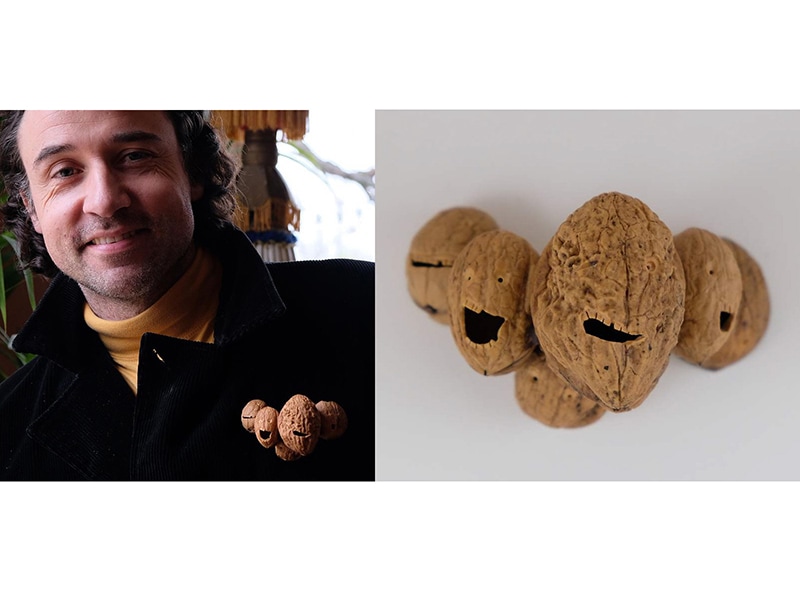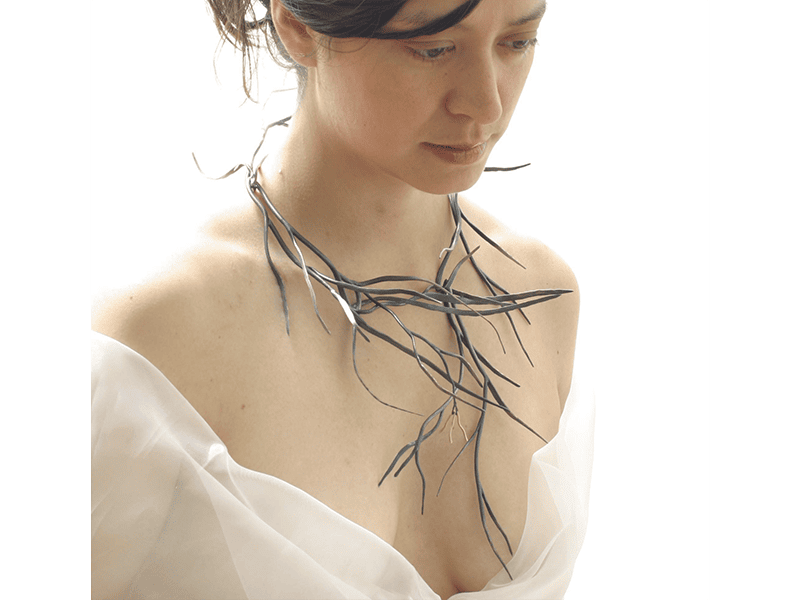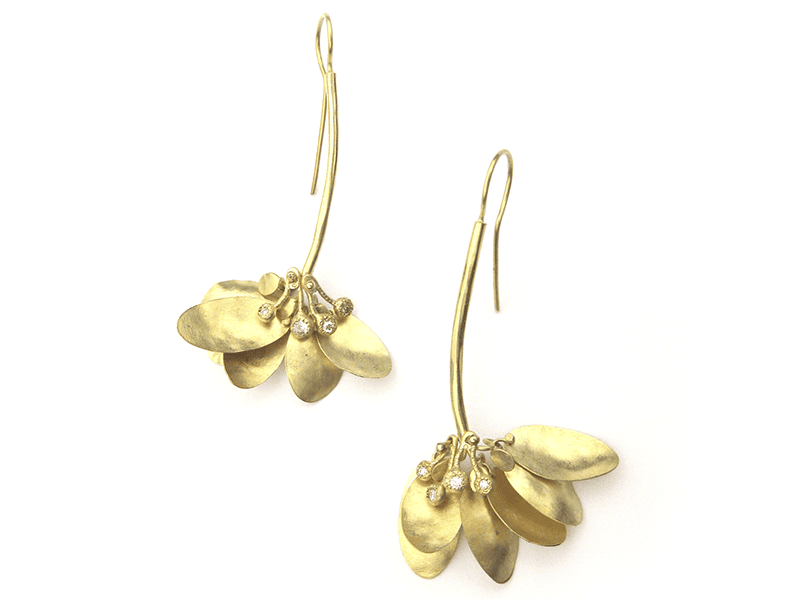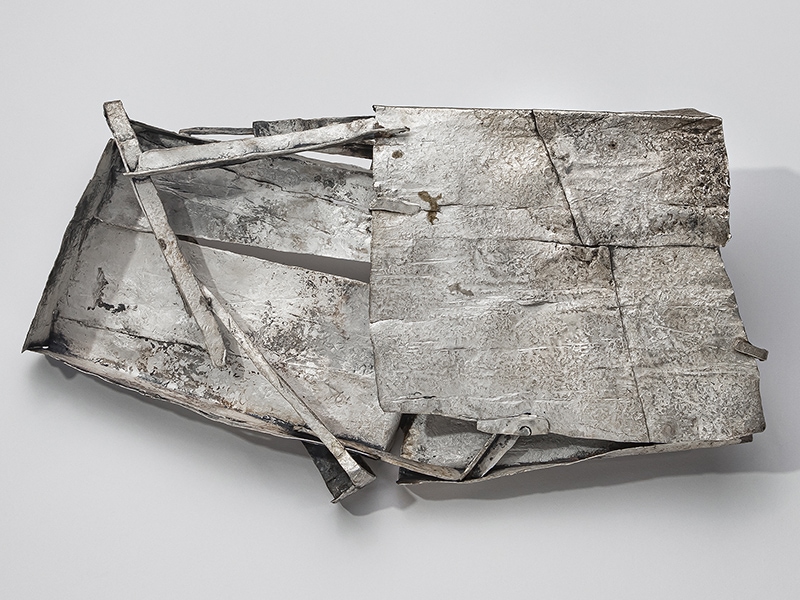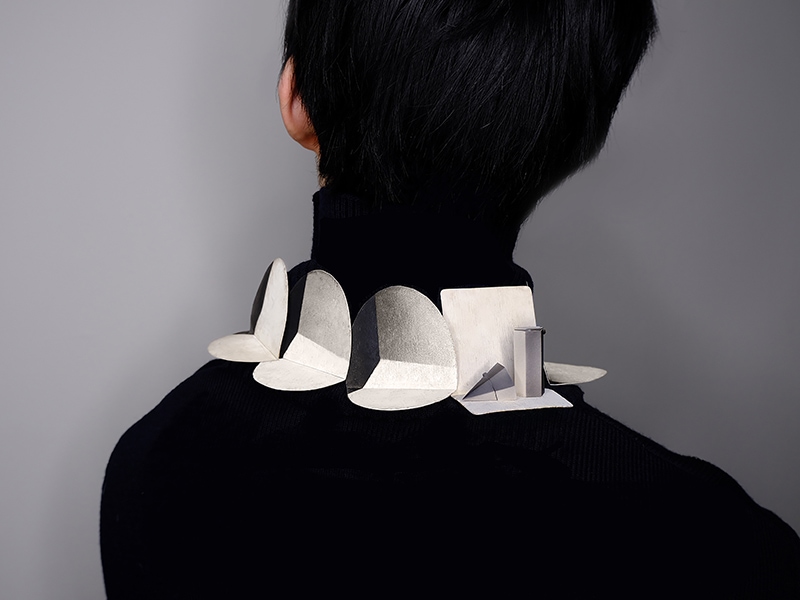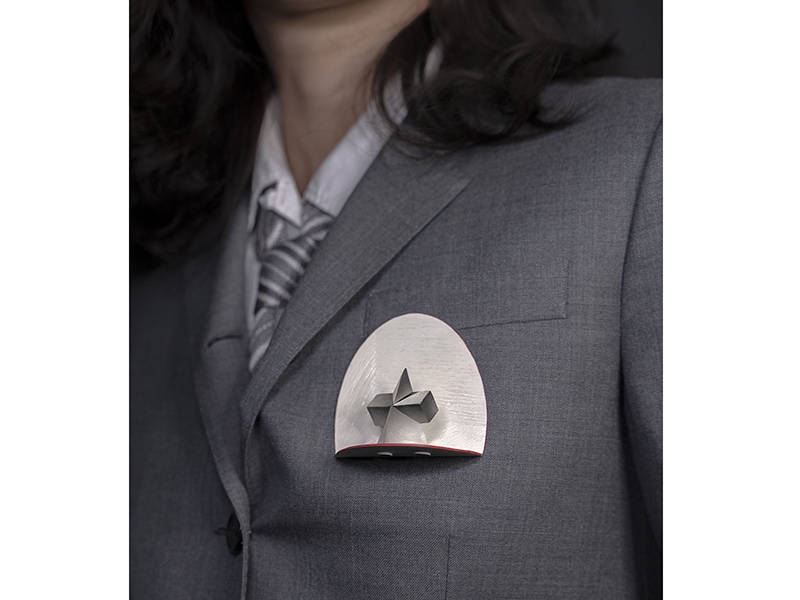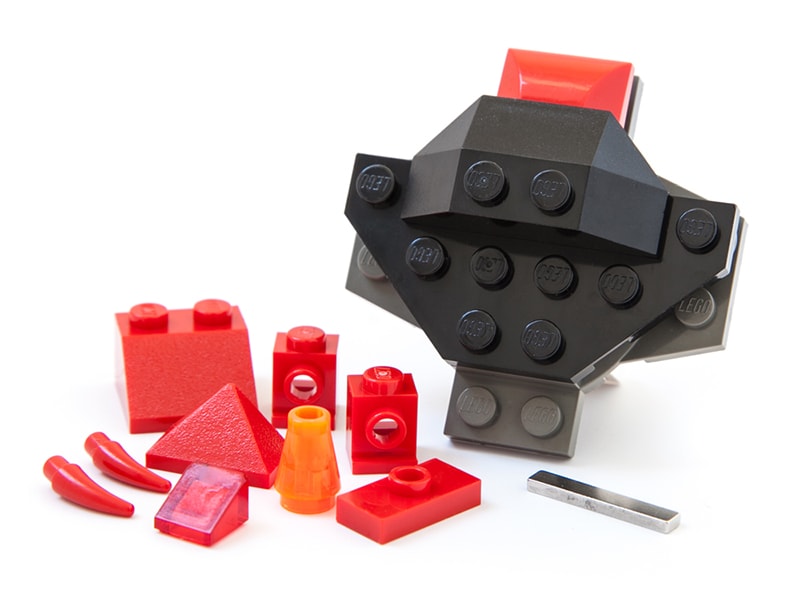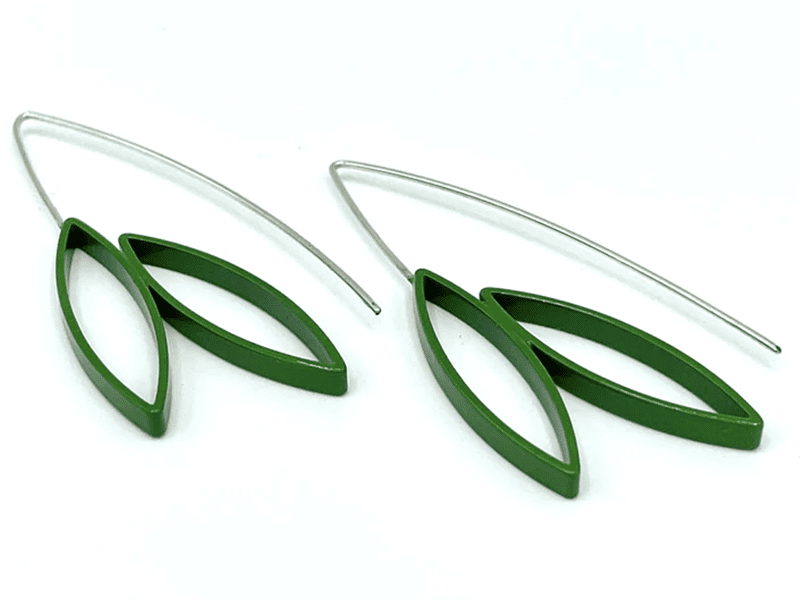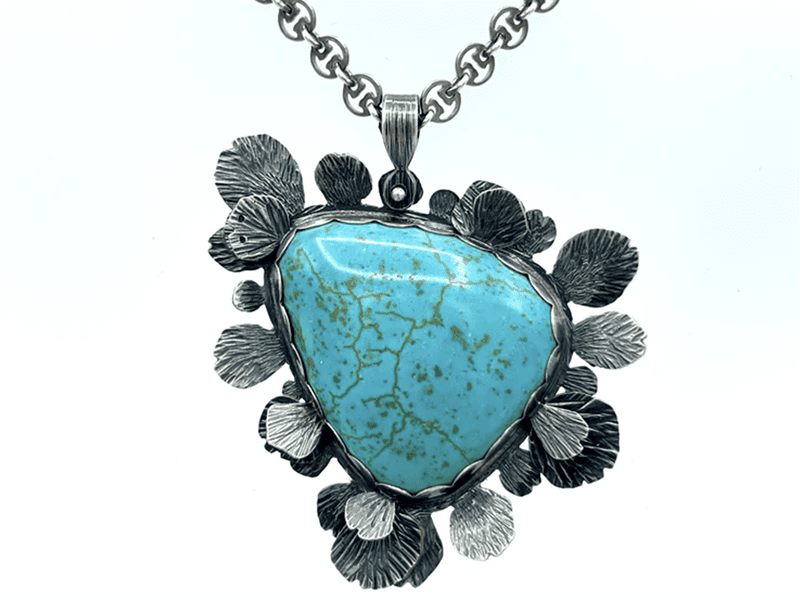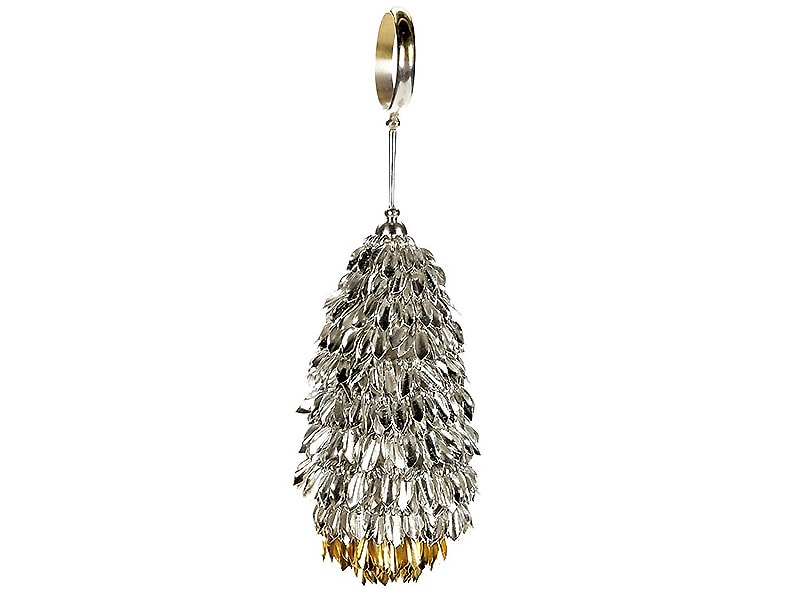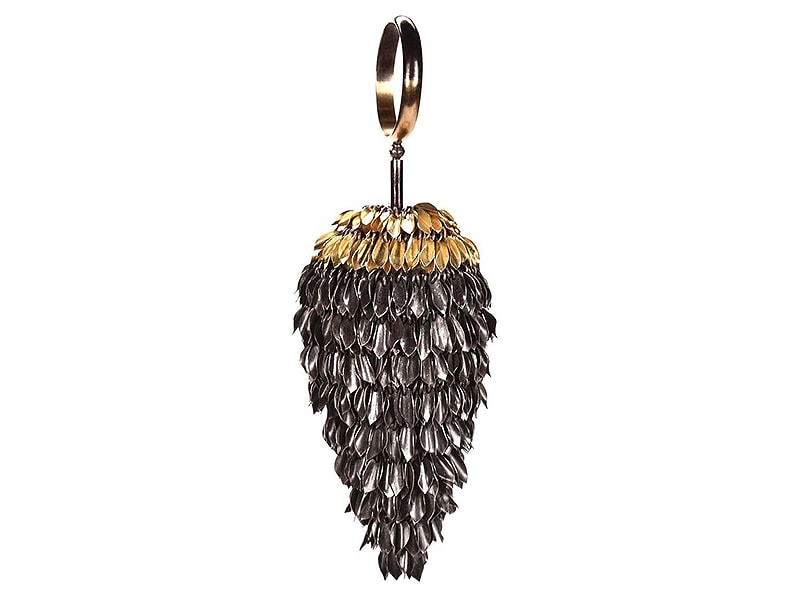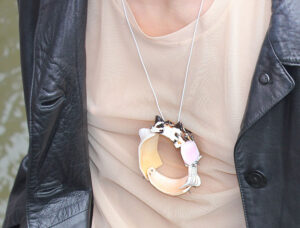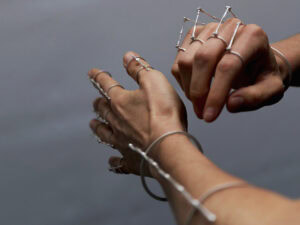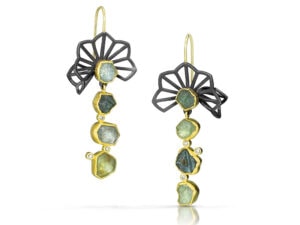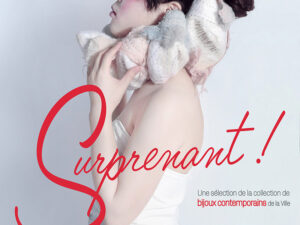May is Asian American and Pacific Islander Heritage Month in the United States. We’re honoring this by spotlighting articles and videos we’ve previously published about AAPI makers and by AAPI writers.
Curtis H. Arima
Arima is the chair of the Jewelry/Metal Arts Program at California College of the Arts, where he’s also an associate professor. The maker is drawn to the transformative nature of materials and the memory, emotion, and history that objects can hold. He earned a BFA from California College of Arts and Crafts and an MFA from Cranbrook Academy. Arima’s jewelry and sculpture has been exhibited/published nationally and internationally. (Check out his website.) He has lectured and taught workshops in the US, Japan, and China, and is a member of the Ethical Metalsmiths Advisory Committee. Follow Arima on Instagram.
Ada Chen
The recent Pratt graduate has been getting noticed for making jewelry that explores stereotypes about Asian Americans. These earrings came out of conversations she had with men who sexually fetishized Asian women and objectified them as typically submissive. Stay up to date with Chen’s practice on Instagram, or visit her website.
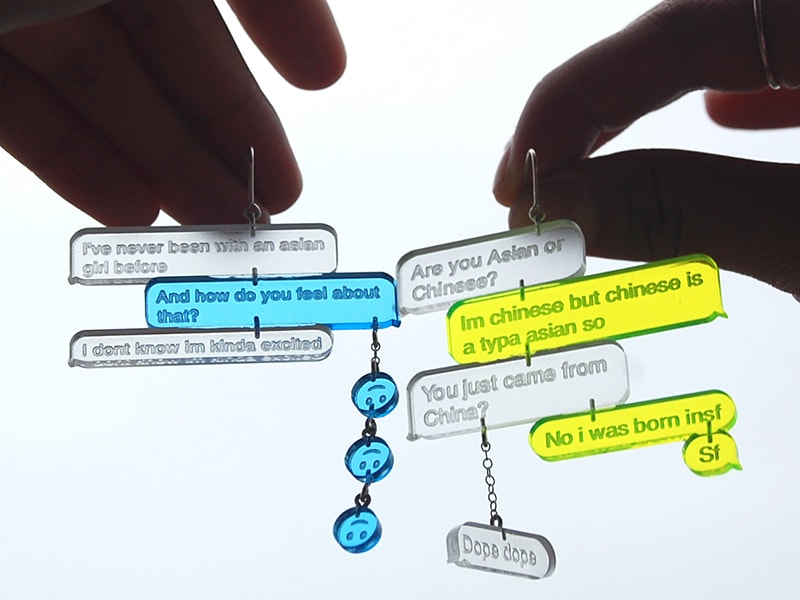
Christine Clark
The former head of the metals department at Oregon College of Art and Craft now focuses on installation art (read AJF’s interview, by Olivia Shih) but continues to teach jewelry-making workshops, as well as classes on other topics. See course offerings here, and keep up with her work on Instagram.
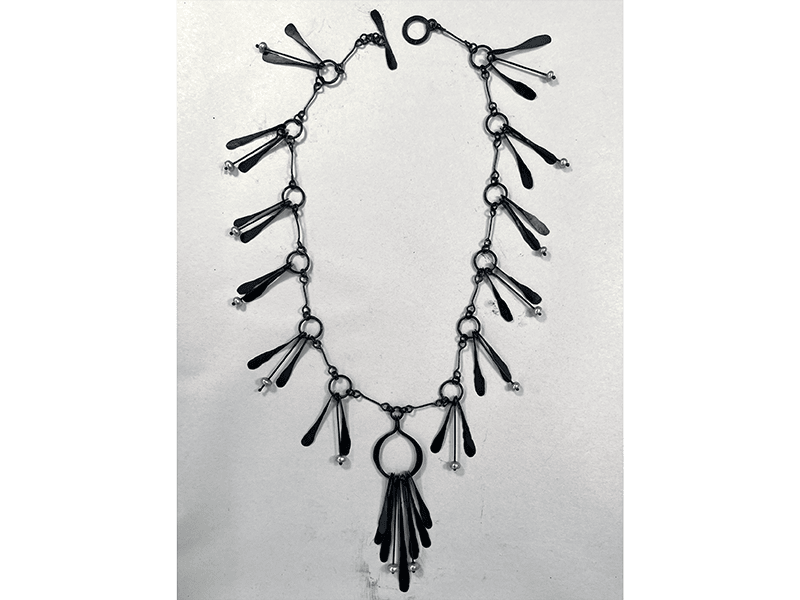
Motoko Furuhashi
Furuhashi is fascinated by the natural cycle of growth, decay, and death—and the complexity of the processes that govern life between one place and the next. Using specific sites as her medium, she expands the conceptual meaning and purpose of the object, and play with the audience’s understanding of place. Relevant to the site from which materials have been excavated, each object is a representation of the specific correlations between time, location, perception, and importance; each carrying the history of the site captured within. Her work is distant memories embodied, and histories waiting to be told. She teaches at New Mexico State University. She was interviewed on the occasion of CrossPASS, her exhibition with Demitra Thomloudis, at Velvet da Vinci. In this project, her tape brooches are created by a direct intake of the road. She rolls the tape on the road and winds it back up. The tape physically captures whatever is lying on the ground in that moment and collects it within the finished wound object; read more about that here. Website. Instagram.

April Higashi
The jewelry maker also owns Shibumi Gallery, which is located in Berkeley, CA. Higashi founded the gallery in 2005, conceiving it as a dynamic space where she could not only create and exhibit her own work but also showcase the inspiring work of fellow artists. She sells production pieces and also creates custom work.

Read an interview with Susan Cummins here. Former AJF editor Ben Lignel talked with her on the occasion of an exhibition aimed at a male clientele. Follow Higashi on Instagram.

Janice Ho
Ho makes “miniature worlds, three-dimensional snapshots of natural elements, and portraits of plants and their littlest parts in silver, gold, enameled copper, and porcelain. Many pieces are inspired by science and the archiving of plant biology, such as illustrations of plant anatomy and models in cross section.” Others are inspired by insect eggs and plant ailments that she finds in her garden. Visit her website and Instagram.
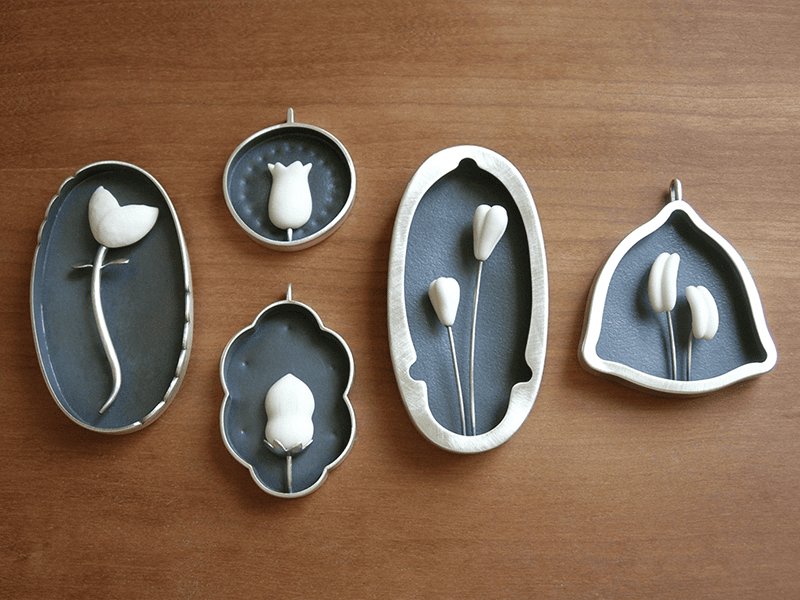
Ron Ho
Born in Hawai’i in 1936, he died in 2017 in his home in Seattle. While pursuing a Master’s of Art Education degree at the University of Washington, “it so happened that the last summer quarter that I was finishing up, Ramona Solberg came to teach jewelry,” he recalled. “And Ramona was a person who literally changed my life. Because at that point I didn’t know I was going to be a jewelry artist.” Ho became an art teacher and a part-time jeweler.

Ho used found objects—many of them Chinese—in his jewelry designs. Not many craft galleries existed in the 60s, but a few competitions provided opportunities, and Ho won awards for his unique art jewelry. The Bellevue Arts Museum exhibited a retrospective of the maker in 2006—it was called Dim Sum at the On-On Tea Room—and posthumously exhibited Ho’s writings, letters, images, paintings, and objects in A Jeweler’s Tale. Northwest Designer Craftsmen produced a 30-minute documentary called Living Treasures: Ron Ho: Becoming Chinese, A Jeweler’s Tale, which you can watch here on YouTube.
Jessica Hughes
Hughes is an artist, writer, and jewelry enthusiast. A graduate of Tyler School of Art, Temple University, she’s the creative director at a fashion jewelry and accessories company, where she leads the design, marketing, trend, and product merchandising teams.
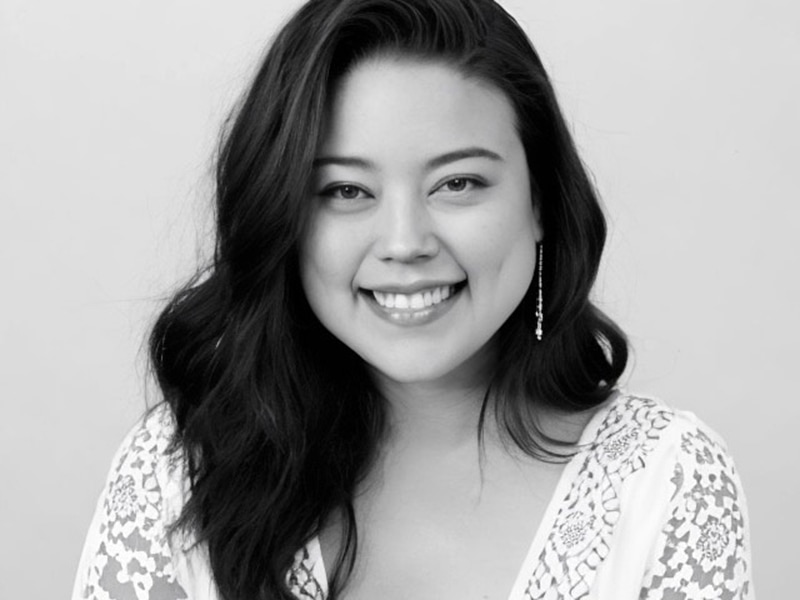
Hughes has produced a lot of interviews with art jewelry heavy hitters, including
- Jorunn Veiteberg
- Galerie Biró’s Olga Zobel
- Alan Preston and Pauline Bern, from Fingers Gallery
- See the full list of her interviews here
Reiko Ishiyama
“My work has an almost fragile quality, stressing lightness and mobility,” says the New York-based maker. “By shaping paper thin sheets of silver, I can house space itself. When people hold my work in hands, they are often surprised by its delicacy and lightness. There is an evanescent, momentary quality that I hope people can truly savor when they wear my pieces.”
In a talk she gave to AJF members at SOFA, Ishiyama recounted stories from her youth, about a sweet she would enjoy in a tea house and her visit to a neighboring silkworm farm. She described the straight lines of a kimono and how it comes to life on the body. These stories demonstrate how floating is essential to her aesthetic. “I’m trying to let the layers of flatness breathe or to find space. Then flatness can stand up. It can move. I want to blow air between the sheets and lift them up momentarily. It’s really momentary.” Read the talk on Ishiyama’s website and visit her online shop.
Masumi Kataoka
We interviewed Kataoka here after she won AJF’s Emerging Artist Award in 2008. She later joined us on AJF Live in 2020; watch a recording of that event here.

“I am currently working on wearable art utilizing insect structures combined with forms inspired by human body parts. This direction has evolved from my interest in the way children anthropomorphize stuffed animals for security,” says the maker. These motifs “establish emotional distance, thereby eliciting a more powerful response. Most recently I have been focusing on Eastern idioms about insects believed to live within us and control our emotions. Through my process, insects are transformed into metal and glass, and once-living material is put back into life, making them more permanent.” See more work on Kataoka’s website, here.
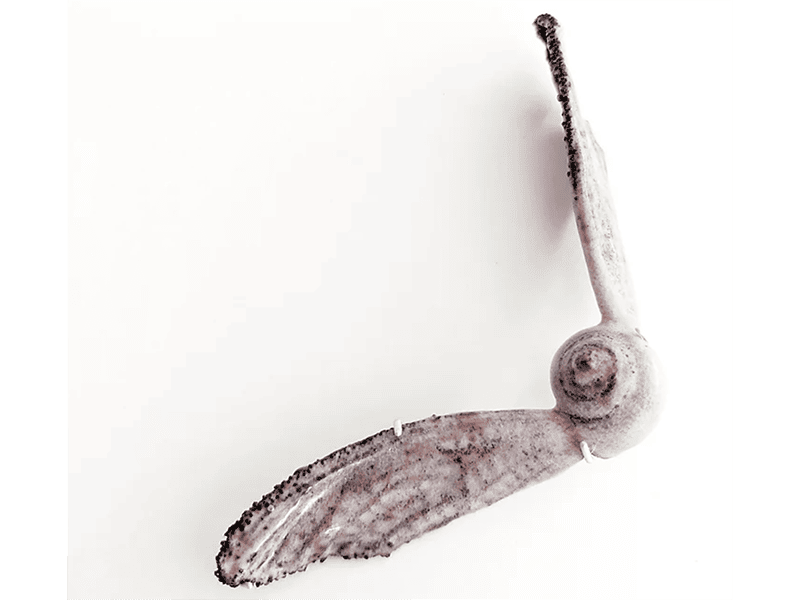
Hongsock Lee
Lee attended Kon-Kuk University, in Korea, then got his MFA at Rhode Island School of Design. He has taught at Savannah College of Art and Design since 2011. He makes both jewelry and sculpture.
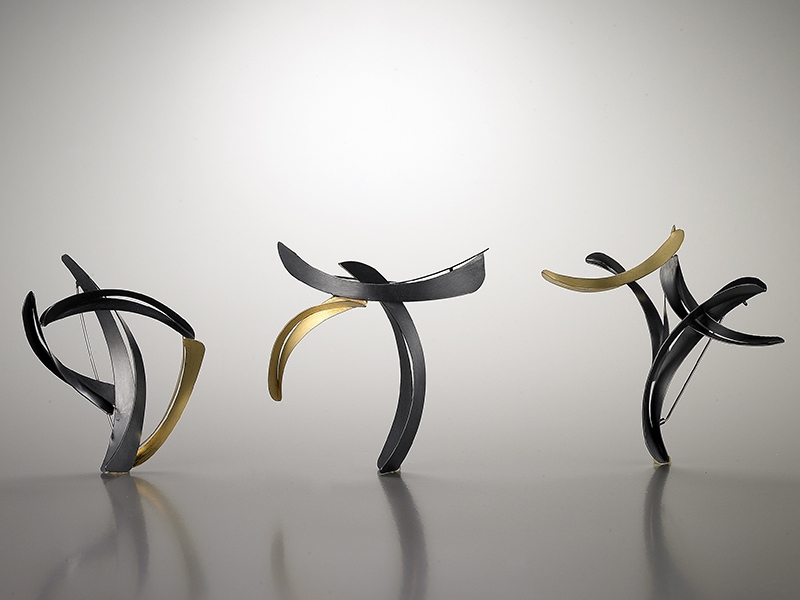
“My work begins with interpreting the meaning of space,” he says. “This reinterpreted expanse is then filled with geometric shapes – lines – points. The process focuses on empty space and the intervals between forms. Repetitive attempts at composition assemble the geometric shapes into their final form achieving the critical aesthetic goal. There is a moment of enlightenment from this recurrent process and artistic awareness allows me to know the point at which I must stop — to leave the space, the beauty of space. The beauty of space is the most important factor in my works. These conscious voids allow the viewers’ imagination at to enter and connect.” See more work on Lee’s website.

Jeong Ju Lee
“Woven wire mesh is a very attractive material in which wires are woven together to create different patterns,” says the maker, who taught as an adjunct at Rochester Institute of Technology a few years after getting an MFA there. “I discovered that when two sheets of wire mesh overlap with distance, they create beautiful patterns and geometry, giving the illusion that there might be something else in between. In my work, more than two layers of sheet mesh are stacked together and interlaced in order to invent a new form or pattern.”
I am inspired by geometric patterns in nature such as cube –shaped crystal locks, stair stepped crystal and tessellations. These are formed by repeating patterns and organizing shapes over a flat surface. The dot, line, shape and direction that are represented by mesh in my work are all critical, as they serve as a visual language for me to embody my creative process. I am fascinated when patterns offer infinite possibility with repetition and complexity.” See more work here.
Cong Ma
Ma was a finalist for the 2022 Young Artist Award. We interviewed her here. Go here on Ma’s Instagram feed to watch her setting up her jewelry at Patina, during the hoopla of Munich 2023—it will help you understand the optical play in the work.
Kamal Nassif
Nassif received her BFA in Jewelry and Metalsmithing from the Rhode Island School of Design in Providence, RI. Afterward, she worked as the office manager and arts administrator at Brooklyn Metal Works while being a guest writer for AJF. Her interviews include
- Kate Scott, of Gallery Funaki
- Aurélie Guillaume
- Rob Koudijs, with his eponymous gallery
- Artist Sabina Tiemroth
Nassif lives in New York and is the studio manager at Christopher Myers Studio, while also pursuing her own projects. See her work on Instagram or her website.

Masako Onodera
Onodera states that “Objects exist for decades, centuries or even millennia. Their functions transform over time from utilitarian to symbolic, from direct use by their owners to a ritual, indirect use. Despite their inanimate existence they stipulate a sense of space and time with their tactile and visual sensations. Objects are loaded with their stories and functions as well as the trace of hands that have touched them. My work is the means to awake the viewers and wearer of the objects. It aims to make them conscious of their own bodies and the evanescence of time. The art object becomes a theater for the indelible physical and emotional memories of everyday. They are both sensual and peculiar. They suggest an experience of the body that is altered by the tactile and visual characteristics of the article.” The maker uses a multitude of materials, from metals to wood to plastic to gut to dissected old tea services. A fascinating piece is shown in this interview about the Shadow Themes exhibition, curated by Marjorie Simon and Biba Schutz. Take in Onodera’s work on her website and on Instagram.

emiko oye
The San Francisco artist creates bold, colorful jewelry with repurposed LEGO®, from ready-to-wear to one-of-a-kind conceptual work inspired by haute couture, art history, David Bowie, and nonviolent communication and community. The jewelry universally tugs on the nostalgic heartstrings, artfully interweaving memories into conversation-sparking adornment. In “Back from the Dead: Ornament’s Return,” a 2009 article that focused on how contemporary jewelers were engaging with the trend toward ornament that was sweeping the world of industrial design, you can see one of oye’s spectacular necklaces for a queen. More like it appear on her website, here.
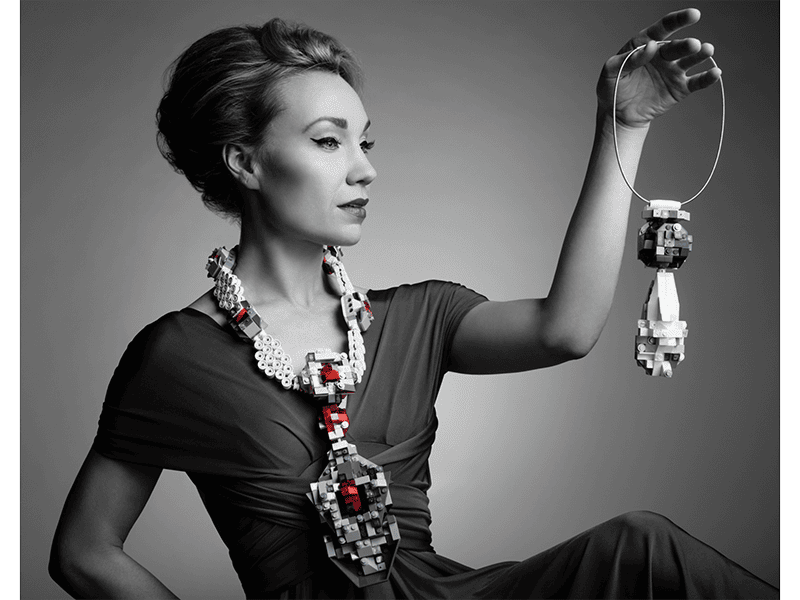
Art Jewelry Forum commissioned a limited-edition pin from oye in 2014 (here’s the press release). A few of the pins are still available. Get yours by joining AJF at the $150 level or higher; it’s our way of saying “thank you”! (Click here to join.)
oye came on AJF Live with Nikki Coupee on June 18, 2020, not long after the start of pandemic lockdowns. Watch a recording of the event. AJF visited oye’s studio during its 2022 trip to San Francisco. Get a glimpse of it in this photo essay. Stay up to date on everything the maker is doing via her Instagram feed.
So Young Park
Park’s contemporary jewelry forms and theory are inspired from her thesis, Nativity, and memories from her childhood. She grew up near the ocean in the southern part of South Korea. Park used to play with sea life and plants and collected many different kinds of shells and pebbles. She loved touching and observing the surface texture and pattern of shells and various naturally shaped pebbles during her happy childhood. Through her thesis works, she found that human life and plant life have similar growth and life characteristics.
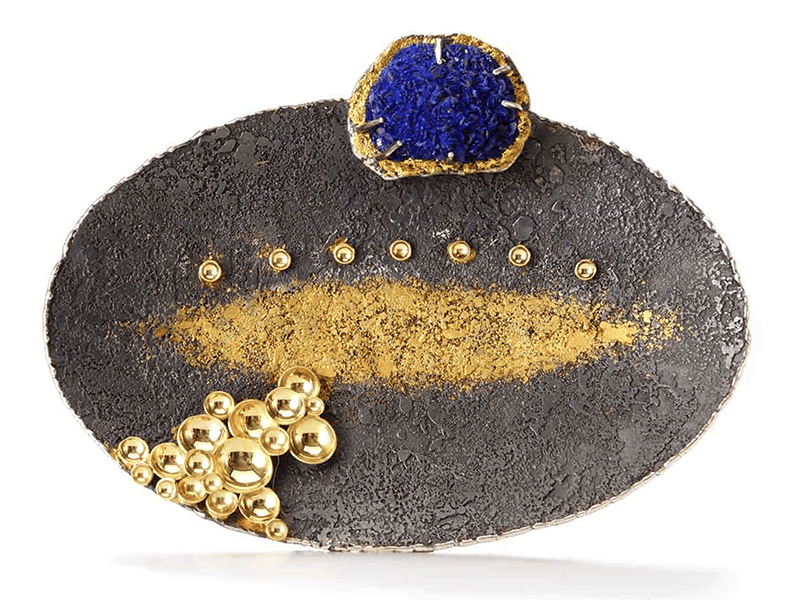
After earning a BFA and a MFA in metal and jewelry from Kon-Kuk University, in Seoul, Park opened her own studio, called DuDuRim. In 2001 she decided to come to the US. She graduated with a second MFA in metal and jewelry design from the Rochester Institute of Technology in 2003. She taught metalsmithing both at Syracuse University and RIT as an adjunct professor from 2003 to 2007. In 2006, So Young started So Young Park Studio. Her jewelry art forms are assembled through the harmonic use of wires, tiny discs, engraved patterns, and textures forged of gold or silver, creating elegant yet unusual visual forms. Wires, small discs, textures, and other small elements represent the single cells that make up all life. Website. Instagram.
Yun Gee Park
Yun Gee Park Gallery is a gallery/gardens destination in Tucson, AZ, presenting contemporary fine art, art jewelry, and objects. The complex is a regional “hidden gem,” noted for its collection of internationally established artists who explore unconventional materials and forms; its distinctive manner of display and installation; and its focus on curation of all aspects of one’s life, including environment, body, and action. The property features a main gallery, an experimental gallery, an outdoor sculpture garden, and four distinct gardens that combine Sonoran and Korean aesthetics.

The collection on offer at the gallery is eclectic and contemporary, while exhibiting a curatorial cohesion that is bold, provocative, and unconventional, yet elegantly executed with strong links to artistic tradition and traditional techniques. Artists who are invited to present their works at the gallery are chosen based on their aesthetically successful combination of concepts and selection of media—that is, there is no other set of materials that the artist could have chosen that would more satisfactorily convey the artist’s intent.
Chinanshu Sharma
Sharma is “a boring banker turned designer-maker,” she says. She’s based in California, but learned her skills at the Indian Institute of Gems and Jewellery Jaipur. She then ran a small for-profit business in India, employing women who worked as housemaids. She taught them to make jewelry, gave them designs to reproduce that she had developed to reproduce, and sold the pieces at arts and crafts fairs. See more designs from her brand, Paarisha Jewelry, on her website and on her Instagram.

Kristin Mitsu Shiga
Shiga operates ’Okina Jewelry on the Big Island of Hawai’i. She’s deeply influenced by her biracial upbringing and by her participation in numerous artist collaborations. Her work is in the Permanent Collection of the White House. She maintains a close association with MetalWerx and regularly teaches around the United States. Get the latest news on Instagram.
Olivia Shih
Shih is a contemporary jeweler, artist, and writer based in Oakland, CA. Born in the US and raised in Taiwan, she is interested in the cultural nuances that can be explored through wearable sculpture.
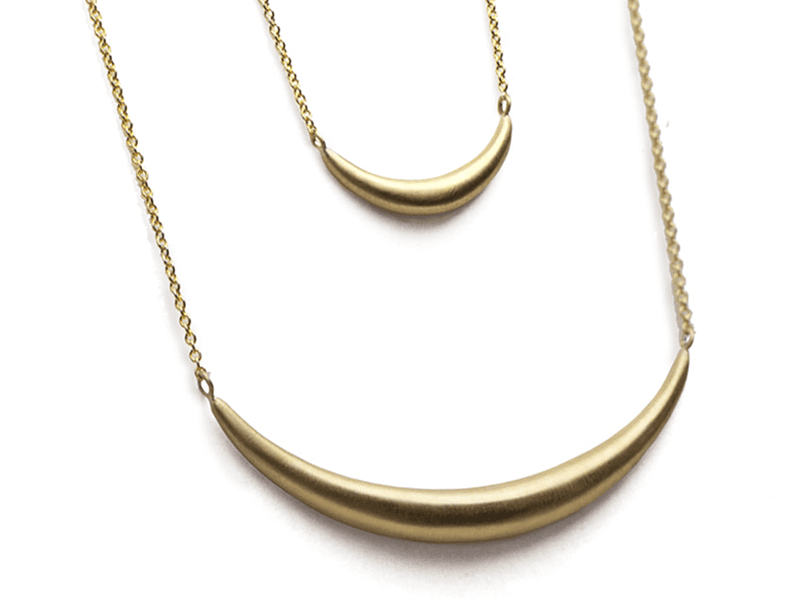
Shih holds a BA in Creative Writing from Columbia University and a BFA in Jewelry and Metal Arts from the California College of the Arts. She’s an assistant editor at Metalsmith magazine and has produced interviews for AJF since 2018, including:
- New York City Jewelry Week founders JB Jones and Bella Neyman
- Gallerist Irene Belfi
- Grace Stewart and Nancy Cook, of the Metal Museum
- Maker and educator Chequita Nahar
For a full list of her interviews, go here. See Shih’s jewelry for soft-spoken and thoughtful humans here. And get the latest news on her career on Instagram.
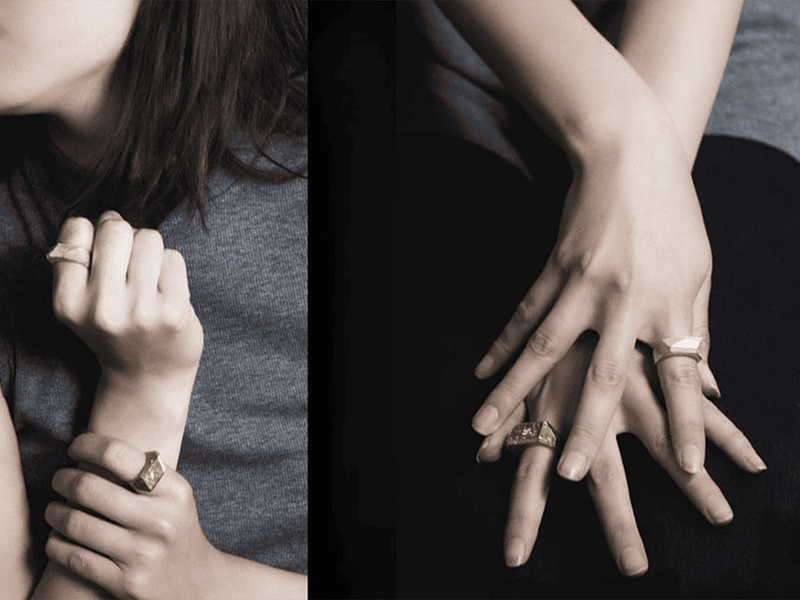
Jay Song
Song is a professor and chair of the jewelry program at Savannah College of Art and Design, which is an AJF member school. By exploring lanterns as a communicative form, her jewelry serves as way to interpret and express. The rings are more intimate, in that the lanterns are meant to hang below hands that pray or meditate. The lanterns employ both ceremonial and decorative functions. The rings aren’t meant to isolate specific meanings, but rather to suggest a moment of thought where stillness, beauty, and illumination can peacefully coexist. Follow her on Instagram, and visit her website.
Linda Tien
Tien and visual artist Ellen Kleckner collaborated on an evolving exploration of hand tools, utensils, and other equipment used for a particular purpose for The Im-ple-ment Archive, which showed at Baltimore Jewelry Center September 3–October 2, 2021. The Vietnamese-American artist, from Fort Worth, TX, has a background in metalsmithing and jewelry design but has always worked across media and formats including sculpture, performance, installation and video. Tien also has many years’ experience in curation and gallery work. Check out her website and Instagram.
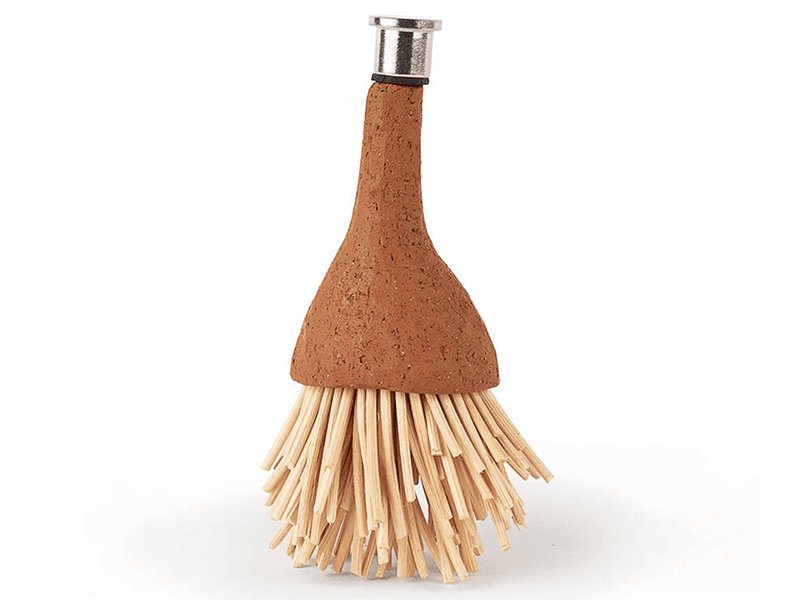
Myung Urso
Urso is an artist, curator, and art director known for manipulating wire, fiber, ink, and stitching to create one-of-a-kind jewelry pieces. Urso is fascinated by the tactile. “I generally do not have a pre-set plan or sketch for my ideas,” she says. “I am also an observer [of] how my work evolves. This way is quite risky, at the same time adventurous. I believe ‘over-planning kills magic.’ I also appreciate Pablo Picasso’s quotes, ‘When I haven’t blue I use red’ and “I begin with an idea and then [it]becomes something else.’ That is exactly how I work.” Read her interview with Susan Cummins here. Visit her website here.
Kimber Wiegand
Wiegand holds a BA in creative writing from Johns Hopkins University and is currently training as a metalsmith at the Baltimore Jewelry Center. She reviewed the Betty Cooke retrospective at Walters Art Museum, in Baltimore, MD, US, for AJF.

Namita Gupta Wiggers
Wiggers is a writer, curator, and educator based in Portland, OR. Among the articles she has contributed to AJF are “Curatorial Conundrums: Exhibiting Contemporary Art Jewelry in a Museum,” “Kerianne Quick’s Fob,” and the short essay “Jewelry as a Way to Transfer Wealth,” drawn from the book Contemporary Jewelry in Perspective, on the way that contemporary jewelry challenges long-held traditions of intergenerational transfers of wealth through jewelry.
Wiggers is the director and cofounder of Critical Craft Forum, an online and onsite platform for exchange (Facebook group, @critcraftforum, www.criticalcraftforum.com). From 2004–2014, she served as the director and chief curator for the Museum of Contemporary Craft, in Portland, OR. Wiggers founded, directed, and taught in the first low-residency graduate program focused on craft histories and theory: the MA in Critical Craft Studies (MACR), at Warren Wilson College, in Swannanoa, NC, from 2017–2023. She contributes to online and in-print journals, books, and catalogs.
